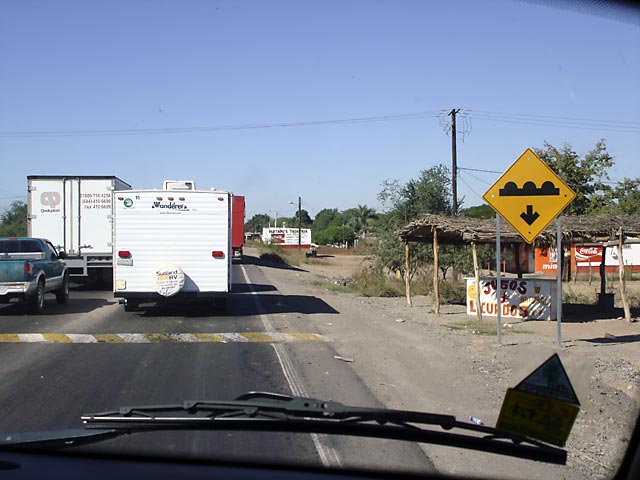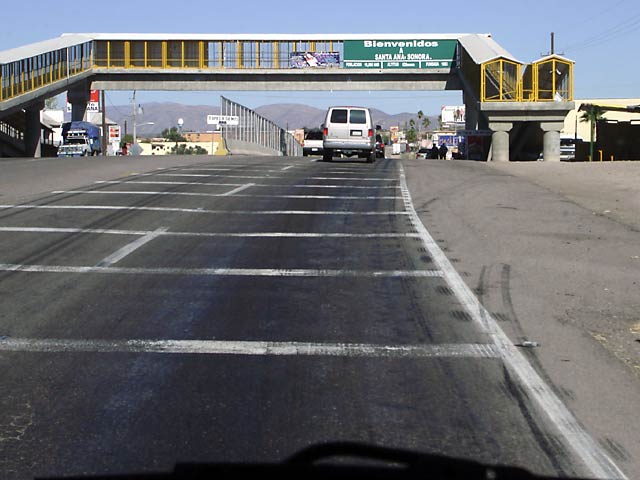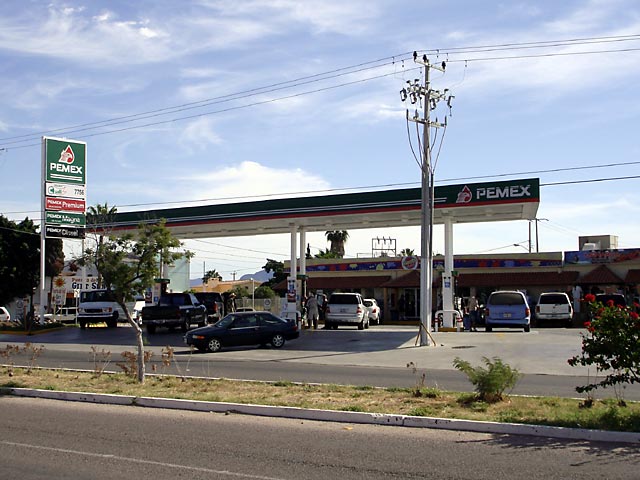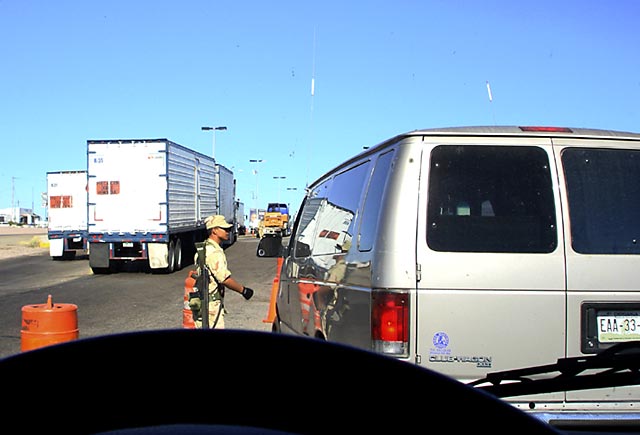
Comments on RV Caravaning in Mexico
A few random personal thoughts on RV caravaning in Mexico:
1. Communications in a convoy. We traveled as a convoy with a wagon master up front, leading the way, and usually a tail gunner at the rear. We used CB radios to communicate with the wagon master, tail gunner, or each other. The wagon master would provide driving directions over the CB as we went. Using his CB, our guide would also provide information about areas that we were passing through, or things of interest along our route as we traveled. Most rigs had good CBs with external antennas. We had a handheld CB with a built-in antenna; when used inside a vehicle, our range was limited. We compensated for this by positioning ourselves near the front of the caravan so we could hear the driving directions. If we do this again, I would invest in a better CB radio. We also used FRS walkie-talkies as a backup. In addition, at the beginning of the trip we were provided with a booklet containing detailed turn-by-turn directions for the entire trip.

2. Highways. Mexico has toll roads between major cities. These are
normally four-lane divided highways, but not up to US interstate highway
standards. Sometimes they are two-lane highways. The tolls (toll station shown
to the right) varied considerably, but averaged about $5 per toll for an
automobile; the toll for a full-size motorhome was about 70% more, plus the toll
for a tow vehicle. The tolls seemed expensive, but using the alternative free
highways meant traveling on narrower roads in poorer condition, and more
obstructions slowing you down. Hence it is better to use the toll roads, despite
the cost.

3. Topes. "Tope" (pronounced "toe-pay") is the Spanish word for speed bump. You find them
everywhere, even on major highways. They are marked by yellow signs with 2 or 3
bumps, as in the photo. They were found at the entrance to toll stations, near
schools, entering small villages, etc. The topes have to be taken as slow as
possible; it is best to come to almost a complete stop before crossing them.

4. Vibradores. When you see a sign for "vibradores" and a series
of white lines across the highway, you can expect to hit a series of mini speed
bumps painted with white lines; the distance between them gets shorter as you
progress through the "vibradores". They are the Mexican equivalent of rumble
strips. Their purpose is to get you to slow down to about 15 - 20 mph. It is
best not to ignore them, or you will have a very rough ride.

5. Gasoline. Gas stations in Mexico are owned and operated by the
federal government; they go under the name "Pemex" . The prices are the same at
all stations, so there is no point in looking for cheaper gas. All stations
would have unleaded regular (called "Magna") and premium gas. Many stations
would also carry diesel. The cost of Magna during our trip was 6.71 pesos per
liter, which converts to about $2.40 per gallon, somewhat higher than in the
U.S. Our diesel-using friends told us that diesel was considerably cheaper than
in the U.S. There are no self-service stations; an employee pumps the gas for
you. Normally you pay by cash; only a few stations accept credit cards.
Sometimes, someone would offer to wash your window; he will be expecting a tip
for his service.

6. Cattle. In rural areas we occasionally saw cattle grazing right
next to the roadway, sometimes even closer than in this photo. When they are
that close it is best to move over and give them plenty of room; hitting a cow
at 60 mph would ruin your day, if not your vehicle.

7. Agricultural checkpoints. There are agricultural checkpoints
(a.k.a. fruit police) in some locations. Our wagon master would explain that we
were a convoy of Americans. Sometimes they would wave us through without
having us stop. Once, however, they stopped us and asked about apples and pears;
we had to give up three mangy apples.

8. Military checkpoints. A legacy of 9/11 is that there are military
checkpoints throughout Mexico. We were told that they were looking for illegal
weapons and drugs. Usually they waved us through without inspecting us, but on
our last day we were stopped and one soldier came inside the RV. He opened
several cabinets to see what was inside and then let us go. I was glad that I
didn't have to unload the trunk for him. There was nothing contraband in it, but
digging it all out and putting it back would have been a chore.

9. Street vendors. At places where cars stop, such as at red lights,
toll booths, etc., people will come up and try to sell you almost anything.
Others will come up and try to collect money for some charitable cause (at least
I thought that is what they wanted), or offer to wash your windshield for a fee.
Particularly intense was the parade of street vendors at the border crossing at
Nogales (see photo), where we re-entered the U.S.
10. Traveling with a Tour Company. Our tour guide and wagon master were
bilingual; they were Mexican and spoke excellent English. Having Mexican guides
seems to us to be important. During the train ride through the Copper Canyon, we
shared the train with another RV caravan that did not have a Mexican guide. At
one point the train company was going to shuttle us off on to a siding for three
hours, so other trains could pass. That would have totally blown our schedule
for the day. Our guide, using the train master's radio, objected to the train
dispatcher in Mexico City and got him to give our train higher priority so we
didn't have to sit there so long. If our guide had been an American, I doubt
that he would have been successful. The wagon master, an American, for the other
group was basically clueless as to what was happening and had to depend on our
guide for information.